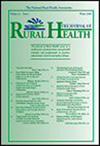The Commission on Cancer (CoC) establishes standards to support multidisciplinary, comprehensive cancer care. CoC-accredited cancer programs diagnose and/or treat 73% of patients in the United States. However, rural patients may experience diminished access to CoC-accredited cancer programs. Our study evaluated distance to hospitals by CoC accreditation status, rurality, and Census Division.
All US hospitals were identified from public-use Homeland Infrastructure Foundation-Level Data, then merged with CoC-accreditation data. Rural-Urban Continuum Codes (RUCC) were used to categorize counties as metro (RUCC 1-3), large rural (RUCC 4-6), or small rural (RUCC 7-9). Distance from each county centroid to the nearest CoC and non-CoC hospital was calculated using the Great Circle Distance method in ArcGIS.
Of 1,382 CoC-accredited hospitals, 89% were in metro counties. Small rural counties contained a total of 30 CoC and 794 non-CoC hospitals. CoC hospitals were located 4.0, 10.1, and 11.5 times farther away than non-CoC hospitals for residents of metro, large rural, and small rural counties, respectively, while the average distance to non-CoC hospitals was similar across groups (9.4-13.6 miles). Distance to CoC-accredited facilities was greatest west of the Mississippi River, in particular the Mountain Division (99.2 miles).
Despite similar proximity to non-CoC hospitals across groups, CoC hospitals are located farther from large and small rural counties than metro counties, suggesting rural patients have diminished access to multidisciplinary, comprehensive cancer care afforded by CoC-accredited hospitals. Addressing distance-based access barriers to high-quality, comprehensive cancer treatment in rural US communities will require a multisectoral approach.


